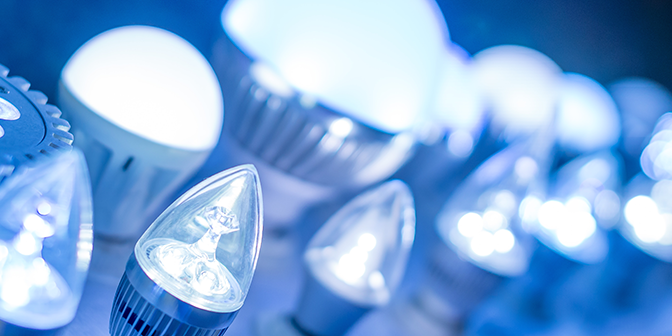Changes in the Lighting Landscape: What LED—Pun Intended—to Better Bulbs?
Let's Save Energy
Alliance to Save Energy's Blog

Have you noticed how much has changed in recent years when it comes to light bulbs? Traditional light bulbs (incandescent light bulbs) have been a staple in American homes since Thomas Edison first invented them more than 100 years ago, but changes in technology and new regulations have led to a significant shift in the light bulb landscape towards compact fluorescent light bulbs (CFLs) and light emitting diodes (LEDs). Consumers now have more choices when it comes to picking a light bulb, which also happen to be more efficient and cost-effective and will last much longer than a traditional light bulb.
Background on Bulbs
Back in 2007, Congress passed, and President George W. Bush signed into law, the Energy Independence and Security Act (EISA). Backed by strong, bipartisan support, EISA contained a wide range of energy-related provisions aimed at increasing the energy security of the United States. Among these provisions was one that established minimum energy efficiency standards for light bulbs, which would gradually become stricter over time. The first standards required light bulbs to use 25-30 percent less energy (phased in between 2012 and 2014) and a 60 percent reduction target for 2020. Estimates at the time put the potential savings from these standards when fully implemented at more than $12.5 billion, which equates to about $85 per household.
However, an appropriations rider included in the Consolidated Appropriations Act of 2012 (and every appropriations bill since) blocked the U.S. Department of Energy (DOE) from enforcing the new light bulb standards for incandescent light bulbs. While the rider created uncertainty for both manufacturers and consumers, it did little to derail the momentum of innovation to improve on antiquated incandescent light bulbs and move to the newer, more efficient technologies.
Development of New Efficiency Standards
Even though Congress has taken action to inhibit efficiency standards for incandescent light bulbs, DOE has been working consistently toward meeting its statutory requirements. On February 12, 2016, DOE issued a proposed rule for new efficiency standards for CFLs and LEDs, which is designed to reach the 2020 efficiency target mandated by EISA. The proposed standard does not discriminate by technology, but instead sets a general efficiency target of 45 lumens per watt. However, of the technology currently available, only LEDs are able to meet that target. DOE is currently accepting comments on the proposed rule and hopes to issue a final rule by January 1, 2017, with an effective date of January 1, 2020. If finalized, this rule would help families and businesses save over $9 billion on utility bills and new bulbs over 30 years of shipments and would eliminate 52 million metric tons of CO2 emissions. Furthermore, the new standard will likely build upon the accomplishments of previous light bulb standards to push technological innovation to new levels, all while cutting utility bills and protecting the environment.
Embracing the Shift
As DOE and consumers shift their focus to more efficient light bulbs, it is important to consider how retailers and manufacturers are reacting to the changing landscape. Within the last year, there have been two significant announcements made by industry leading companies that show the lighting market is clearly headed toward an LED future. In August 2015 IKEA announced, effective September 1, 2015, that its stores would only carry LEDs. This announcement was followed by another in February 2016 when General Electric (GE) announced that it will cease production of CFLs for the U.S. market in 2016 in order to focus solely on LEDs.
A Bright Future for LEDs
The light bulb landscape has gone through some significant changes in recent years, but there are certainly bigger changes to come. LEDs have many benefits over their incandescent counterparts including longer lifespans and lower energy costs, all without sacrificing consumer satisfaction. Highlighting the growing consumer support for LEDs, the National Electrical Manufacturers Association reports that LED sales in the third quarter of 2015 increased by more than 230 percent compared to the same period in 2014. Even so, LEDs still only represent approximately 9 percent of the market, which means there is plenty of room for improvement. That number is sure to increase as American consumers embrace this energy-efficient technology and the energy and monetary savings it brings with it.
RECENT BLOG POSTS
STAY EMPOWERED
Help the Alliance advocate for policies to use energy more efficiently – supporting job creation, reduced emissions, and lower costs. Contact your member of Congress.
Energy efficiency is smart, nonpartisan, and practical. So are we. Our strength comes from an unparalleled group of Alliance Associates working collaboratively under the Alliance umbrella to pave the way for energy efficiency gains.
The power of efficiency is in your hands. Supporting the Alliance means supporting a vision for using energy more productively to achieve economic growth, a cleaner environment, and greater energy security, affordability, and reliability.



